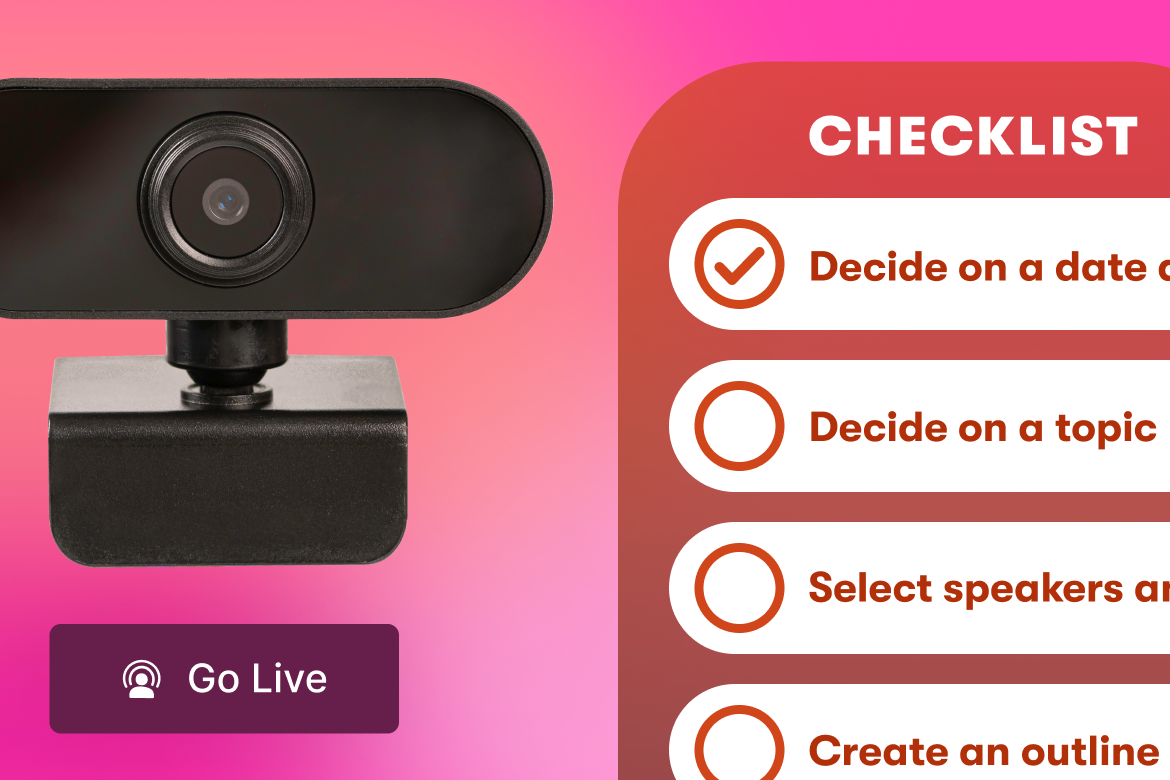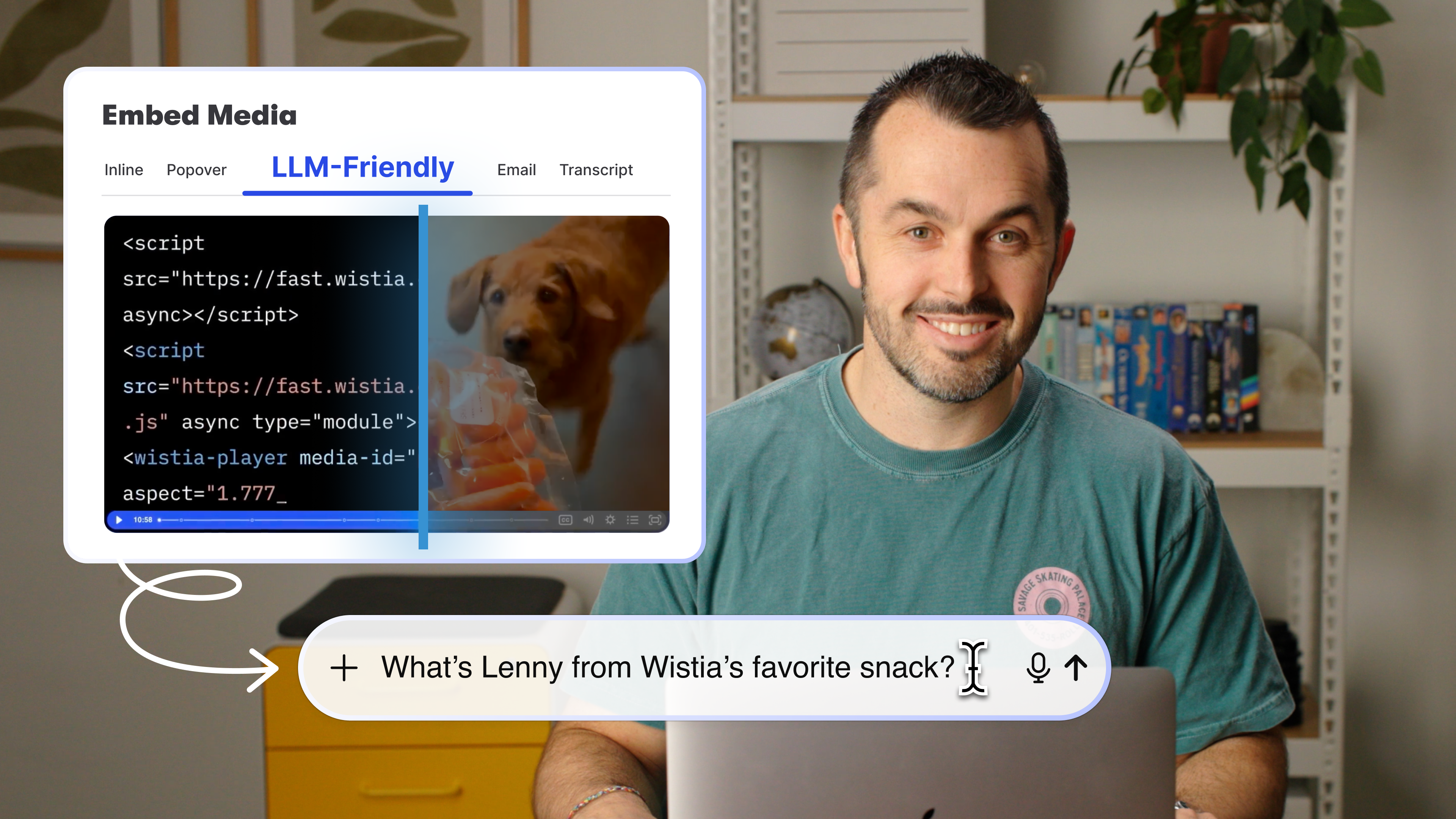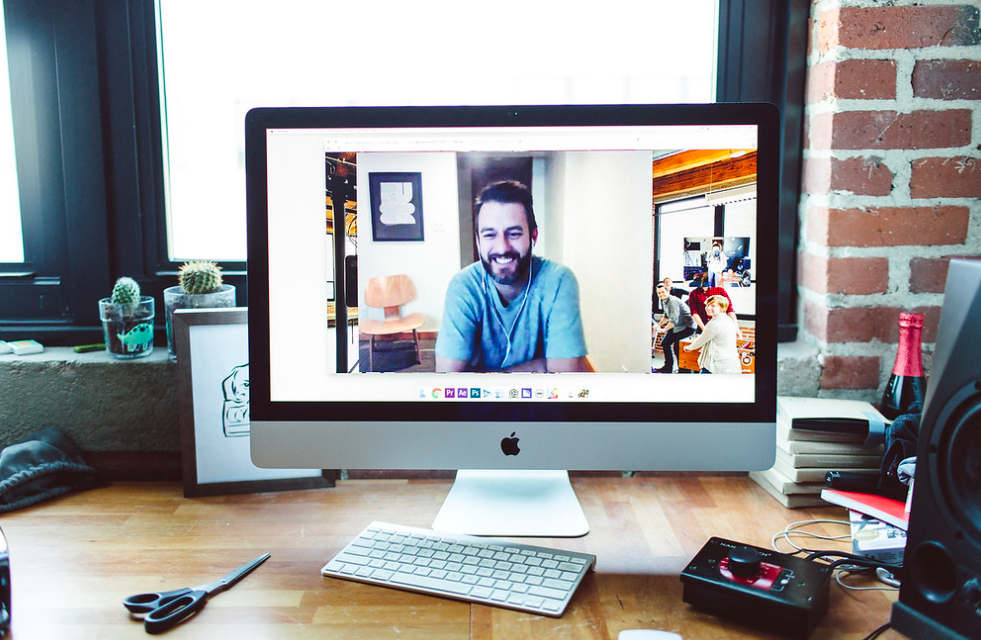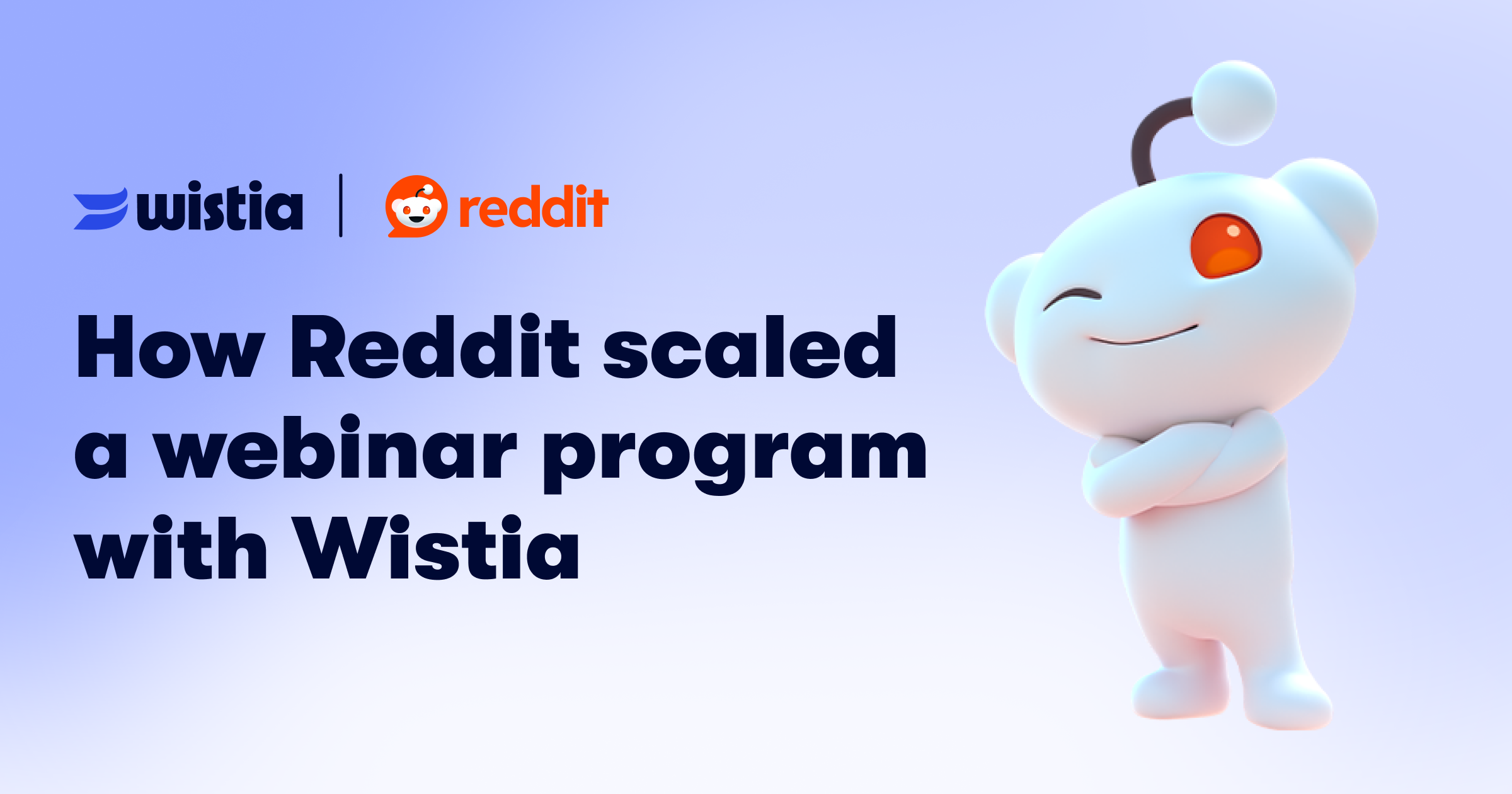7 Examples That Show the Best of Long-Form Video
July 11, 2019
Topic tags
Whether it’s the hottest new web series or an in-depth TED Talk, people love to watch long-form video — and businesses are catching on to the trend.
Unlike shorter, more product-centric videos, long-form content offers companies the opportunity to show their commitment to their mission and connect with viewers on a deeper, more emotional level. Longer content also enables intensive educational experiences for the viewer, whether the video covers exciting industry trends or specific approaches to tackling problems.
We put together a list of long-form video series and one-off productions to showcase how companies live and breathe their values through video. Small to medium-sized businesses can use this list of branded content to get inspired when it comes to creating content for their own brands. Let’s get into it!
1. InVision’s video series — Helping product designers level up their skills
InVision is swinging for the fences with long-form video. On their blog, Inside Design, InVision shares videos about design trends and tips, many explaining how to use Sketch and get the most out of it. InVision’s site is filled with robust product tutorials, but these pieces focusing on larger, fundamental design principles — between two and seven minutes long — will help anyone strengthen their overall design foundation. The company has even created a full-length documentary about design thinking at IBM called "The Loop."
InVision’s stated mission is to help users create digital content that people love, so it’s fitting that the company offers viewers new strategies and approaches for designing that go beyond merely using their own tools. The longer format allows viewers to learn the details involved in the execution of new techniques.
InVision examples:
- Design Systems Manager Master Class: In this two-hour, 6-episode series, InVision explores how to create a design system for an entire organization, from start to finish. It taps three design experts to walk through the challenges of product design at scale.
- Design Disrupters: In this series, InVision showcases top designers at the world’s smartest companies and dives into how design has become the new language of business in the 21st century.
With the shift to long-form video, InVision shows they are true leaders in the field of design — not just a tool for designers.
2. ProfitWell’s teardowns — Diving into pricing data for startup leaders
On their Price Intelligently blog, ProfitWell conducts video “teardown” case studies, in which they focus on one to three company pricing pages and talk about what works and what needs improvement. Videos usually feature a lighthearted (though occasionally heated!) conversation between executives Patrick Campbell and Peter Zotto and typically are just under 10 minutes long.
ProfitWell’s long-form videos are conversational, appealing to viewers who gravitate toward podcasts or other content that affords hosts the chance to riff on their knowledge and the topic at hand. Rather than focusing on their own software, ProfitWell’s teardowns appeal to aspiring entrepreneurs and startup leaders looking to discover best practices from successful companies and competitors.
“ProfitWell’s long-form videos are conversational, appealing to viewers who gravitate toward podcasts or other content that affords hosts the chance to riff on their knowledge and the topic at hand.”
ProfitWell examples:
- Tearing Down the Pricing of Buffer and Sprout Social: In this teardown, Patrick and Peter debate the pricing strategies and relative value of two popular social media planning apps, from the perspective of both the customer and the business owner.
The longer format of these videos enables hosts to slowly walk viewers through the pricing pages in question, ensuring that the pace of the content can fit a wide number of learning styles. There’s a healthy mix of commentary and visual aids made with original data, which shows that the company is committed to making the most of the long-form branded video format.
3. Mailchimp Presents — Inspiring creativity in entrepreneurs
Mailchimp’s core focus is email marketing, but their target audience is far more broad than just those interested in sending tons of emails. Experienced business owners and aspiring entrepreneurs alike may find inspiration in the “Mailchimp Presents” video series.
Using high-quality production techniques and clever editing, the videos attach Mailchimp to buzzworthy brands and their founders who, incidentally, use email to communicate with customers. The style of the videos is closer to an independent documentary than to a typical SaaS product video, giving viewers a chance to sit back and enjoy a theatrical glimpse into creative spaces and minds.
Mailchimp examples:
- Hamburger Eyes: In this documentary, we get a behind-the-scenes look at a one-man photography project that evolved into a thriving community of artists based in San Francisco. Mailchimp knows its audience and stays true to its brand by focusing on a creative-centric topic that anyone with a pulse and an appreciation for photography could get behind.
- Taking Stock: A fictional video series about a young female photographer navigating the complexities of agency life, Taking Stock delves into the realities of working in the world of tech and design, giving viewers a chance to see inside the life of a creative. We learn much about the subject’s life here — what drives her, what a typical day looks like — helping the viewer associate Mailchimp with the driven professionals who make the world of entrepreneurship thrive.
Mailchimp has been a visionary brand when it comes to creative storytelling. Ever since they sponsored the first season of Serial, the company has attached itself to big ideas, and, through their own example, they’ve proved that every business can affect a wide audience if they tell a powerful story.
4. Intercom’s videos — Expanding the concept of customer communications
Intercom features videos regularly on its blog, with experts speaking on topics like support, growth, product, and design. Many of the videos are talks that the team and others have done at different conferences, which is a great way for people to see talks that they weren’t geographically capable of attending.
Intercom’s videos educate viewers on new ways to approach Intercom’s core competency — customer support and communication — in a format that encourages in-depth exploration and tutorials. Instead of merely chopping up key takeaways from the talks, long-form video enables the brand to include the overall conference context, linking together key concepts and materials.
Intercom example:
- 5 lessons learned from growing a support team: In this conference video, Intercom’s customer support lead, Sharon Moorhouse, shares five lessons that the company has learned as it has scaled its support operations. It’s meant to engage growing companies, regardless of the industry, and appeal to audiences that may lie outside of the scope of Intercom’s typical customer profile. Sharon’s talk is engaging and packed with visual examples, making the most of the video format and capturing the energy and excitement that she brought to the conference.
Conferences are affirming experiences, where people in the same field can form new connections, get new ideas, and become excited about trends and developments. Intercom’s focus on opening up their otherwise siloed conference material gives audiences a chance to connect with the brand even if they’re far away from the talks or sessions. It shows the company living out its mission of “keeping business personal” by opening up access to the conference experience.
5. Patagonia’s documentaries — Inspiring earth-loving adventurers
Patagonia makes documentary-style videos about real people doing the things they love and excel at in the outdoors. The videos are extremely high-quality, featuring breathtaking visuals and rare glimpses of some of nature’s best vistas.
Instead of merely focusing on their well-loved products, Patagonia’s longer-form content serves as an inspiring reminder of the brand’s central ethos — saving our planet. It’s hard not to fall deeper in love with the earth after watching these pieces, and viewers certainly can see that the brand is about far more than just making outerwear and camping gear.
“Instead of merely focusing on their well-loved products, Patagonia’s longer-form content serves as an inspiring reminder of the brand’s central ethos — saving our planet.”
Patagonia examples:
- Wolfpack: This video follows the training efforts of a group of trail runners living in isolation. Drone shots and ultra-slow-motion close-ups abound, giving the pieces a cinematic quality that is certain to move viewers on an emotional level. The family’s extreme choice to live in the wild is likely outside the desires of most of Patagonia’s customers, but their way of life can inspire viewers to think about how to better connect with planet Earth.
- Takayna: Takayana (Tarkine) is one of the last remaining old-growth rainforests in the world, yet it’s increasingly threatened by mining and other destructive activities. This video highlights the beauty and fragility of the landscape by intercutting meditative shots of flora and fauna with images of devastating excavation and logging. Patagonia is clearly living its mission here — seeking to save the planet by raising awareness about protecting one of our most precious earthly resources.
Patagonia’s mission is one of the most ambitious of any brand out there, and that’s what makes them so successful. By taking a stance on major issues and creating beautiful visual content, they’re proving to an audience why it’s cool to care about more than just clothes and gear. To change the world, Patagonia is leading by example.
6. Glossier’s “Get Ready with Me” Series — Building friendships via morning routines
Many beauty brands rely on mere testimonials to push their products. But Glossier opts to show how their products weave neatly into the lives of their customers. They have a series called “Get Ready with Me” (based on the popular)YouTube trend that follows the morning routine of influencers and creatives. The hashtag for the campaign — #GRWM — encourages customers to create their own content and further engage with the brand.
The pieces also have a casual instructional approach, giving them an educational component that goes beyond a shorter “how-to” piece. They’re showing you how to create a look rather than telling you how to do it.
Glossier example:
- Get Ready With Me: feat. Annahstasia + Glossier: Here, an influencer’s morning routine is shown in real time. In several meditative shots, the camera lingers over Annahstasia going about her morning. It’s easy to imagine someone watching this piece they start their own day to find inspiration and calm from the emotional music and beautiful cinematography.
Glossier, known for its colorful Instagram account and vibrant pop-up stores, creates a calm atmosphere throughout their videos. They create intimacy with the way their videos are shot, and that intimacy will contribute to a long-lasting and better customer relationship than a typical advertisement or commercial.
7. Airbnb — Shifting the focus from places to people
Over the years, Airbnb has evolved beyond being just a website for booking rooms and homes, becoming a platform for finding community through unique experiences. Recently, Airbnb launched an Adventure series featuring hosts and people from all over the world. By focusing on the curated experiences offered through Airbnb’s “Adventures” programs, the brand helps establish itself as far more than a travel app.
Airbnb example:
- Six Strangers: In this 12-minute video, six strangers take an unexpected trip together. Like the other pieces in this series, the length of this video enables a more TV-like viewing experience that mirrors popular reality shows like Naked and Afraid and Survivor.
Through their long-form videos, Airbnb is expressing one of their most significant brand values: “Belong anywhere.” The Adventure series is all about breaking down barriers to find out what people have in common with each other. When people think of Airbnb in this way, the company starts to symbolize connections between people, not just cool destinations.
“When people think of Airbnb in this way, the company starts to symbolize connections between people, not just cool destinations.”
Creating connections with long-form video
More and more brands are reaping the benefits of thinking (and acting!) like media companies. With the wealth of high-quality content vying for their attention, viewers are demanding highly engaging work from companies they encounter. Investing in rich long-form content enables brands to tap into the growing binge-watching habits of their followers while expressing the values that matter most to them and finding deeper ways to connect with customers.






